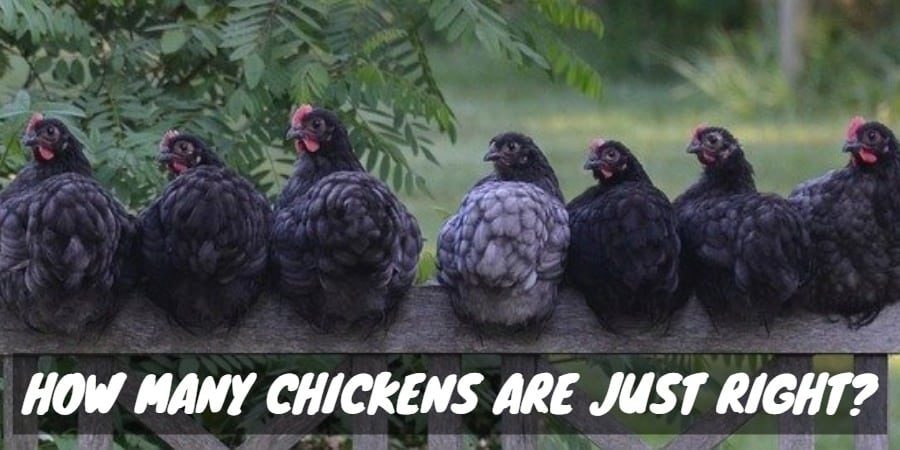A chicken coop, at its most basic, is simply a structure where your chickens can sleep or roost during the night. While your brooding hens will usually have a nesting area inside the coop to lay their eggs, the main purpose of the building is to protect both your male and female chickens during the night. In the coop, your chickens will be able to sleep soundly where they’ll be kept safe from cold weather and dangerous predators. A basic coop can be purchased at many pet supply stores, or you can build your own with materials you have lying around your own home.
What Should My Chicken Coop Look Like?

Whether you build it yourself or purchase it from a store, a chicken coop can be a pretty addition to your backyard that provides a necessary function for the health and safety of your flock. Ultimately, your chicken coop should contain three things:
- a place to sleep
- a place to nest
- a “run”, or semi-covered area outside the coop where chickens can forage for food or stretch their legs
As long as it has those basic things, your chickens will be thrilled with their new home, and they probably won’t worry too much about the aesthetic value of the coop itself.
Source(s): The Chicken Coop by McCallum Made
What Are the Requirements for My Chicken Coop?
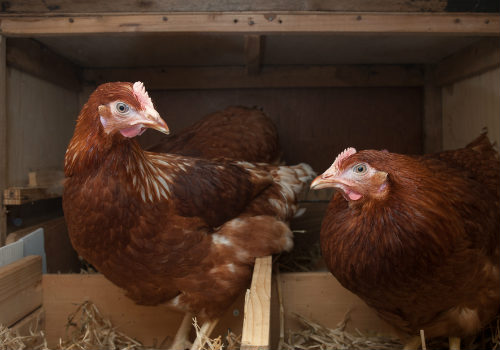
Your chicken coop can be as complicated or as simple as you want, especially if you’re building it yourself. There are however certain features that every coop needs, regardless of size or intricacy:
- nest boxes
- roosts
- ventilation
- protection from predators
- shade or protection from weather
Nest boxes can be anything from old milk cartons to wooden boxes, but they should be around two feet off the ground and provide a place for brooding hens to build their nest and lay eggs.

Every chicken, regardless of age or gender, needs a place to roost – a flat surface at least half a foot off the ground where your chickens that aren’t currently laying will settle in for the night. A simple piece of hardwood can work as a roost if you’re building your coop, or you can buy roosts and perches at a pet supply store.
Make sure your coop is properly ventilated – we’ll address this topic in more detail below – but the gasses and smells in a coop can build up quickly, so providing a way for your chickens to get clean air will keep them healthy and happy.
Protection from predators is an important factor no matter where you live. Depending on your location, this can simply mean sturdy walls to keep out dogs, or it can mean padlocks to keep out raccoons and rodents.
If your chickens use the coop or the run during the day, make sure they have enough shade to keep cool in the summer months and provide protection from the weather during cold or rainy days. A simple overhang over the run will give your chickens somewhere to hunker down until the weather has passed.
Finally, make sure you have sufficient bedding – hay or straw or some other soft material – for your chickens to roost in. This will also function sort of like kitty litter and will make it far easier to clean up any droppings that your chickens leave behind during the night.
How Are Chicken Coops Different?
While a simple look at the chicken coops available in stores can reveal a wide variety of shapes, most chicken coops can be broken down into one of the following categories.
Chicken Coop Types
1. Mobile
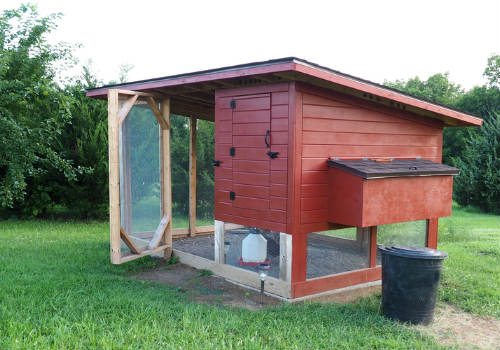
Mobile coops are meant to be moved around the yard and are built to be easy to move. This makes them great options for places with extreme weather, as you can move your chickens to a cooler or warmer part of the yard without difficulty.
However, if you live in a more rural area, or even if you live in an urban area but are worried about dogs or cats, a mobile coop may not provide as much protection from predators as a fixed coop will.
2. Stationary
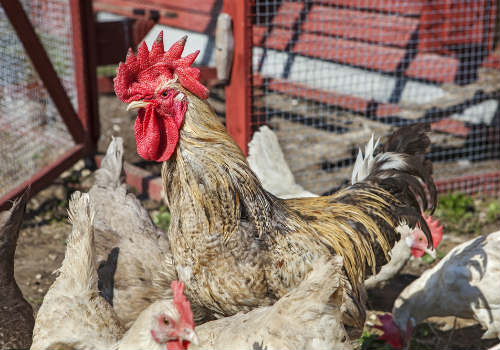
Stationary coops provide more protection for your chickens and can even become a beautiful fixture in your yard.
On the other hand, because chickens forage naturally, the area around a fixed coop will quickly be pecked over, and any vegetation in the area is usually quickly consumed.
3. Semi-mobile
A semi-mobile coop is a coop that can be moved, usually on skids or locked wheels, but is meant to be left in one place for weeks or even months before being moved again. This allows you to change the coop’s position during the year to take advantage of seasonal weather changes.
Unfortunately, like the mobile coop, the semi – mobile coop is slightly more vulnerable to weather and predators than the traditional, fixed chicken coop.
Chicken Coop Size
As a general rule, your coop should have at least 2 to 3 square feet per chicken. This is the absolute minimum amount of space for keeping chickens, as anything less will lead to unhappy chickens, high stress, fighting, and sickness. If your chickens are going to be inside the coop for long periods, you may want to provide more space, anywhere between 5 and 10 square feet, per bird.
The size of your chicken coop should also depend on how much time your chickens usually spend outside. Chickens that are mostly free-range and spend most of their time outside or in a run will be inside the coop only to sleep or nest, so they won’t need much more than the usual 2 to 3 square feet. Chickens that don’t have as large a yard to explore, on the other hand, will probably need more space inside the coop, or else they can very quickly begin to feel cramped or stressed, and begin to act out accordingly.

The 2 to 3 square foot rule applies no matter how large your flock is. Whether you have a flock of four birds or a flock of four hundred, your chickens need the bare minimum of 2 to 3 feet to be healthy, happy, and productive. Again, this is the minimum estimate, so if you give your chickens more space to explore, the happier they’re going to be.
Chicken Coop Construction
Construction material is another aspect of the coop that depends greatly on your location and expectations for the coop. In general, however, your coop should have a solid floor, sturdy walls, and a roof that will protect against the elements.
The floor not only insulates the chickens during the night but also protects against predators that dig or tunnel. For this reason, your floor needs to be a solid base for the rest of coop. On permanent or semi-mobile coops, the floor should be made a thick block of wood or concrete, so that the coop has a heavy base to support its weight.
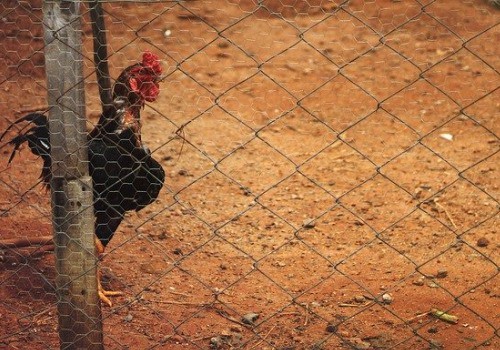
The walls should be made of wood, metal, or hard plastic, depending on your location, weather, and predators. Rural areas with extreme weather should use reinforced wood or metal, while more urban coops may use simple plywood, reinforced with mesh wire.
The roof of your coop can be made up of the same materials as the roof of your own house. Shingles, wood, or just corrugated sheet metal will keep your chickens safe from the weather and also help regulate the temperature on hot or cold days. Just make sure the roof is firmly fastened to the rest of the coop to deter predators that would otherwise be able to sneak through any gaps!
Weather Considerations
Depending on where you live, your coop should reflect the weather you expect for your chickens. Regardless of location, the coop should have a watertight roof to protect from any rain or damp, and access to fresh air throughout the year.
Chickens that live in colder climates should have insulated walls, a thick foundation to protect against ground-chill, and a sturdy roof that can handle the weight of snow or the force of driving rain.
If you live in a warmer climate, on the other hand, you may want to look into building or purchasing a coop that boasts greater ventilation and more open air. During hot nights, your chickens should have access to a steady flow of fresh air, and the roof should be made of a material that won’t absorb heat. Thick walls and a metal roof will keep heat trapped inside, and your chickens will be reluctant to roost throughout the night.
If you live in an area that sees major shifts in weather throughout the seasons, you may want to consider a mobile or semi-mobile coop, so that your chickens can be placed in a cool, breezy area during the summer. During the winter, you can move your coop to a sheltered or protected area where they’ll be safely out of the weather and able to stay warm and dry all winter long!
Breed Considerations
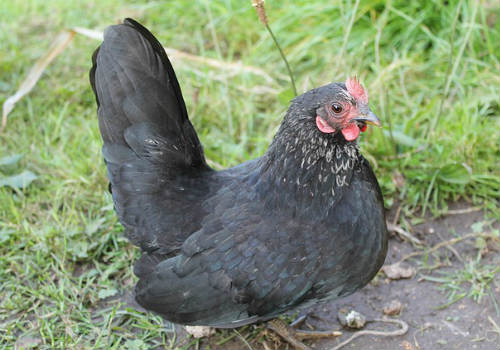
If you’re buying a coop, make sure you take the breed of your chickens into consideration before making a purchase. Most of the chicken coops that you’ll find for purchase in a store base their size on a medium or small breed of chickens. A coop labelled for 5 chickens, for example, is most likely meant to hold five small-breed chickens, most often Bantam breed chickens.
If you’re planning to keep a medium to large breed of chickens, however, this chicken coop will be too small. In that case, either look for a coop that is built for larger chicken breeds (or at least a larger number of chickens) or consider building your own coop. Brahma chickens, Jersey Giants, or Orpington chickens are all popular home breeds, but they’re large enough that a coop built for a small breed chicken will be far too small for more than a few birds.
The temperament of your flock is another factor that you may have to consider before deciding on a coop. While most chickens, regardless of breed, will get along fairly well once they’ve established their pecking order, you may have a difficult flock that doesn’t seem as social as other flocks. If this is the case, you may again want to consider a larger coop, as chickens that feel confined are more likely to act irritably and start fights inside the coop.
Final Thoughts on Chicken Coop Types
Your chicken coop may not look like exactly what you imagined it to be, especially if you built it yourself. However, as long as you provide for your chickens’ basic needs – shelter, warmth, space, and safety – your chickens won’t care about the aesthetic. If you make sure to give them a place where they can be safe and warm during the cold nights, and cool during the summer, your chickens will be happy to have a place to call their own, regardless of what it looks like on the outside!
Should My Chicken Coop Contain Food and Water?
Once your chicken’s general shelter is taken care of, your next major concern is food and water. Because chickens, like most birds, automatically go to sleep during the night, you don’t have to worry about them snacking all night long. As a result, if your coop is big enough, you can keep their food inside the coop with your birds, so that it’ll be easier to access in the morning, and they can eat from the comfort of their coop. So long as you take extra care with cleaning your coop, keeping your birds’ food inside can be a small step that makes your chicken-caring routine quick and easy!
Food for Eating

An important part of feeding your chickens is making sure that their food stays dry. For this reason, keeping food inside the coop can be a quick and easy way of keeping their food tasting just the way they like it. Coop feeders are available for purchase at most pet supply stores.
If you store food in the coop, however, it’s best to hang it from the walls, rather than leaving it in the packaging. Because it’s inside their prearranged sleeping area, some chickens may decide that a feed bag looks like a comfortable place to spend the night, and sleep there instead of their roosting spaces.
coop at home takes a lot of hard work
If you don’t have room inside your coop to store food, try hanging the food containers on the outside of your coop. As long as the containers are covered and sealed tightly, that should be enough to keep them dry throughout the night. However, make sure they are fully sealed, as otherwise, your coop will become a beacon for mice and other rodents.
If you have a covered run on your coop, you can try storing the food there, instead of in the coop itself. Again, if you store your food containers in a more exposed area, this may serve as an invitation for passing pests, so make sure your food is fully secured.
Water for Drinking

Especially during the winter, keeping water inside the coop is a good way of making sure that your chickens have access to clean, drinkable water as soon as they wake up. As a general rule, the ratio of food to water for chickens should be about 1:2.
More so than with food dispensers, water dispensers are usually easily available for purchase at pet supply stores or tack and feed stores in your area. Several water dispensers can also be purchased with a temperature-activated heater. With dispensers like the one linked above, you can be sure that your chickens’ water hasn’t frozen overnight and will be ready for them to drink in the morning.
As with food, you should either store your chickens’ water inside the coop or bring it in at night, to prevent other animals from noting your house as a place to get a quick drink. During the day, if you keep water in the coop, you can take the water dish out of the coop and place it in the run or the yard. This will allow your chickens to have fresh water while they forage.
Storing water in the run or outside the coop will encourage your chickens to be active first thing in the morning, so if you’re worried about your chickens staying indoors too long, placing their water dispenser just outside the coop is a great way to get them up and moving throughout the day.
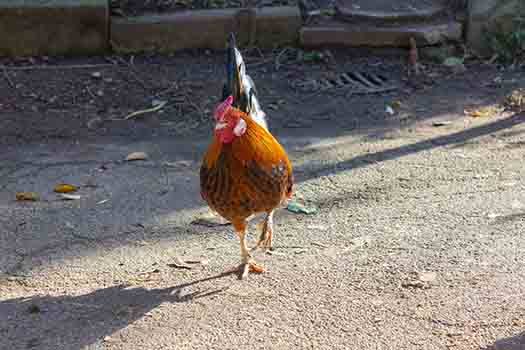
One unfortunate side effect of storing water inside the coop is the potential for drips or spills. If your chickens have spilled water over their bedding, it may prove difficult to clean or increase your coop’s risk of mold. If you are storing your water inside, then, take extra care to check for standing water when you clean your coop daily.
Chicken Coop Sanitation: What Concerns Should I Have?
Storing food and water directly in your coop can make the morning feeding process far simpler, but make sure you pay attention to any spilled food or water while you clean. In addition to basic spills, there are other considerations when dealing with indoor food and drink that may impact your cleaning schedule.
As mentioned above, the biggest concern with keeping food inside the coop is making sure that it stays sanitary and good for your chickens to eat. Hanging your chickens’ food on the walls of the coop can stop the birds from roosting on the bag and soiling it overnight. However, you should still inspect the feed bags regularly to make sure that bodily fluids haven’t contaminated it from the chickens, bugs or other parasites, or moisture and mildew.
Keeping food inside the coop may also increase the amount of time that your birds stay there. This isn’t necessarily a good or a bad thing, but it will lead to an increase in the chicken droppings you’ll be cleaning up. So as long as you’re prepared for the increase in droppings from your chickens, this may be a trade you’re willing to make for the ease of feeding your chickens.
More troublingly, indoor feeders can attract indoor pests like rats and mice, and they may be tempted to make your coop a permanent residence. This will make your chickens extremely nervous in their coop and could lead to a decrease in egg production, or weight loss and other health effects.
Food stored outside the coop, however, is more prone to spoilage, because it is constantly exposed to the elements. If you store your food outside, check it just as regularly as you would inside food, but make sure to look out for rotting food or spots of mold.
With waterers, make sure you’re inspecting the water frequently for growths of bacteria or algae. Both are more likely to grow when water is stored inside, because of the warm, wet environment. However, water stored outside is exposed to just as many contaminants, from passing animals to anything carried into the water dish by the wind.
Ultimately, whether you store your food inside or outside of the coop, there are various health and hygiene concerns associated with both options. So long as you inspect your chickens’ food and water regularly, you’ll be doing everything you can to make sure that your chickens are safe from food or water-borne dangers.
Chicken Coop Ventilation: What Should I Know?
Speaking of sanitation, keeping your coop clean and well-maintained is an important part of making sure that your chickens will have a place to sleep that’s as safe from internal threats as it is to external threats. If your coop isn’t cleaned regularly, diseases can spread quickly through a flock of chickens with devastating effect.
The type of coop you decide to use can also play a role in providing a clean and healthy environment, as the build and design of the coop itself can either help or hurt your chickens, depending on where you live and what kind of flock you want to keep.
Open Air or Protected?
The build of the coop can go a long way towards providing a sanitary environment for your chickens to grow and thrive. When it comes to ventilation, there are two main camps of thought – open air vs. protected spaces.
Clean air is as important for chickens as it is for humans. Just like humans, chickens exhale carbon dioxide and various vapors, so a coop that doesn’t have any ventilation is nothing more than a chicken-sized death trap. A steady supply of fresh oxygen will keep your chickens healthy and happy in all seasons, but is there such a thing as too much fresh air?
Open Air
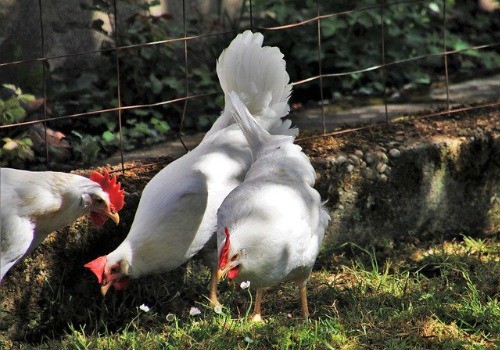
Proponents of an open coop would argue that no, there’s no such thing as too much fresh air.
Chickens are naturally insulated against cold weather with their feathers and down, so an open coop is good for all seasons. By open, of course, we don’t mean that chickens should be completely exposed to the elements. An open coop is one that has multiple doors and openings that allow for a steady flow of air throughout the night.
Open-air coops will usually have a run beneath the coop that allows for air movement, and several small windows higher in the coop to allow for good circulation.
An open-air coop will allow for a better flow of air and better ventilation for your chickens, but it can also increase the risk of your flock catching a chill. If you want an open-air coop, look for a design that can be closed off when the weather turns cold.
Protected

Proponents of a protected coop, on the other hand, argue that there certainly can be too much of a good thing. A protected coop will have fewer doors and windows and thicker walls so that more warmth is stored inside the coop, and not sapped by the movement of air.
The biggest downside of a protected coop is that it allows the air to grow overheated and damp quickly. This creates a condition that is perfect for bacteria and mold. If you prefer a protected coop, look for a design that is easily cleaned and replace the bedding in your coop more regularly.
Whether you decide to go with an open or protected coop is mostly a matter of personal opinion. Most coops provide some level of protection against cold or heat, so a more open or more closed-off coop is just a matter of which design you prefer more. However, after coming to a decision here, there are other factors to consider.
Perhaps the most important factor to consider when thinking about airflow is your local area’s weather.
Weather Considerations
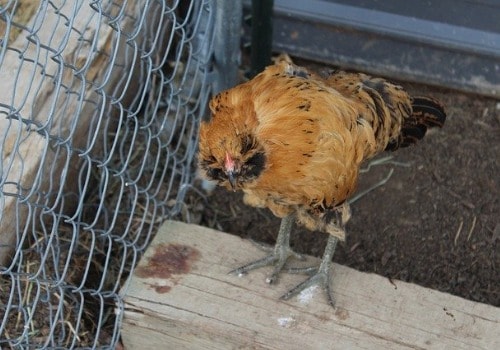
As with most of the other factors in this guide, an important part of ventilation is the weather where you live. If you live in a cold, damp climate, the coop you choose should allow for fresh air without exposure to the weather. If you live in a warm climate, an open-air coop is probably a better choice to prevent your chickens’ air from becoming stale and overheated.
Cold Weather
If you live in a cold or damp area, thick walls and closing doors will keep your chickens warm and dry, but ventilation is still very important. Make sure your coop has a flow of clean air – or, if you’re not comfortable leaving your chickens exposed, try putting a fan in or near your coop to draw out stale, damp air and leave your chickens feeling refreshed.
Look for a fan that’s meant for dusty or outdoor environments and place it near the opening to your coop overnight. Solar-powered fans may provide a cheaper alternative to traditional electric fans, but if you live in an area that doesn’t see a lot of sun, the electric fan may still be the more reliable choice.
Hot Weather
In warmer climates, ventilation is primarily important for keeping your chickens from overheating during the heat of the year. In this setting, look for a coop that has a more open-air design, with windows and doors that can be opened or closed depending on the weather. You may want to consider using a fan in warmer climates, too, not so much to physically cool down the coop as to draw out stale and overheated air. In warmer regions, be sure to also keep an eye out for mildew, as the warm, damp air inside the chicken coop can quickly become a perfect petri dish.
How Often Should I Clean My Chicken Coop?
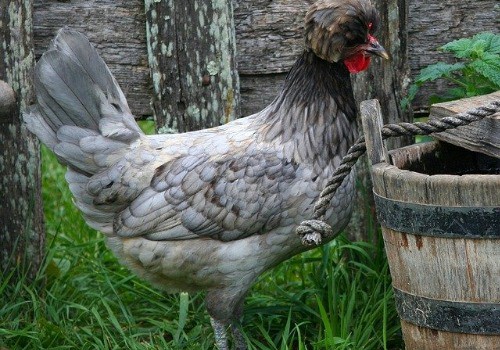
Ventilating your coop will go a long way towards keeping your chickens clean and healthy, but a large part of the work still comes down to old-fashioned cleaning. At least once a week, you should do a basic spot cleaning, but once or more a month, you need to put on a pair of gloves, move all the chickens out into the run, and do an in-depth deep clean by following these steps:
1. Do a dry sweep
Before you do anything else, use a shovel or rake to pull out all the used bedding, as well as any dirt or droppings that have accumulated in the coop. You may want to wear a mask throughout the cleaning process, but especially during this first step.
2. Use water
Once you’ve gotten out all the dry waste, use a garden hose to spray down the walls of the coop. This will wash off any old droppings or fluids from your chickens, and will also help work any stubborn stains lose.
3. Do a “dry” sweep
Your coop won’t really be dry anymore, but go back in with the shovel or rake you used before and scrape out any bedding, dirt, or waste that you couldn’t get the first time. By now, your coop should look close to clean, but you can repeat the previous steps until you’re satisfied.
4. Use a cleaner
Using a natural cleaning product or just white vinegar, take a rag or sponge and scrub down the walls and floor of your coop so that nothing is left behind that could infect your chickens.
5. Rinse and repeat
Once you’ve scrubbed down the coop, give the walls another rinse with the hose to wash away any cleaning product that your chickens may not like. Make sure you spray the farthest corners of the coop, as cleaning products and chemicals that accumulate there can go undetected for an unhealthy amount of time.
6. Let the sunshine in
You can dry the walls of your coop with a towel or rag, but, if your chickens are secured somewhere else, the best way to dry off your coop is just to let it air dry. Sunshine is a natural disinfectant, and this will also give your coop that clean, fresh-air smell.
7. Take care of accessories
While your coop is drying out in the open air, take the time to wash all the moving parts inside your coop. This can include scrubbing down unused nesting boxes or washing out food and water dispensers. You can set those aside to air dry as well, but if you’re using a food or water dispenser with a lot of small parts, make sure they’re completely dried before you return them to the coop.
8. Don’t forget to make the bed

Once your coop is dry, put in some fresh bedding. If you want, you can add a couple of sprigs of lavender or other sweet-smelling herbs to keep your coop smelling fresh and clean until it’s time to do it all over again! Once that’s done, you can officially let your chickens back in the coop, but give them a little bit of time to get readjusted if you’ve used a new cleaner or air freshener.
Should I Buy or Build My Chicken Coop?
When it comes to actually choosing a coop to put in your backyard, you have two options: buying one or building your own. Which option you prefer comes down to a matter of time, convenience, and quality. Either way, if you’ve done the proper research beforehand, you can rest assured that you’ve chosen the perfect coop for you, your flock, your schedule, and your wallet.
Buying

At the most basic level, if you choose to buy a coop rather than build your own, it’s most likely because you don’t have the time for a large DIY project, or because you are not as confident in your construction skills as others may be. Buying a coop from a pet supply store, home improvement store, or online retailer is much faster and much easier than building a coop in your own backyard.
Pros
1. It’s Easier
Building a coop using nothing but a blueprint or a vague outline can be a daunting task, and using a pre-made coop is simply a lot easier. Most coops come either already assembled or with instructions for assembly, but the pieces that make up the structure have already been cut and measured.
In addition, by buying a coop, you can skip all the hassle of trying to find the best materials for each step of the project and trust that the experts who designed the coop have already done that work for you.
2. It can be cheaper
Some coops can certainly be pricier than others. However, it’s also easy to find affordable options online or in home improvement stores that are still high quality and well designed.
As mentioned above, buying a pre-made coop also saves you the cost of tracking down the right materials. You save money on any extra material that would have been discarded, not to mention the cost of the time you would have to spend if you were building your own coop from scratch.
3. Quality assurance
Another benefit of purchasing a coop from an outside party is that you know you have a product that is guaranteed to work for your chickens. The coops available for purchase have been expressly designed with various climates or situations in mind, and most come with a warranty against damages, ranging in duration from a year and up.
Moreover, as mentioned earlier, when you use a pre-made coop, you can trust that the materials used are the best alternatives for construction. This will give you a coop where you can feel completely confident letting your chickens sleep during cold and hot weather alike.
Cons
1. It can be pricey
Some chicken coops are affordable, but the more elaborate the structure, the more expensive the coop, and the costs start to add up very quickly.
2. Some assembly required
While it’s certainly easier than building your own, some assembly is usually required with kit coops, which means you’re not entirely safe from construction duty even if you choose to go with a store-bought coop.
3. One size fits all
Because pre-made coops are exactly that–pre-made–the coop is often a cookie-cutter design that may not be best suited for your backyard or for your flock. This can make it extremely difficult to find a coop that suits all the specific requirements of your area without building the coop yourself.
Building
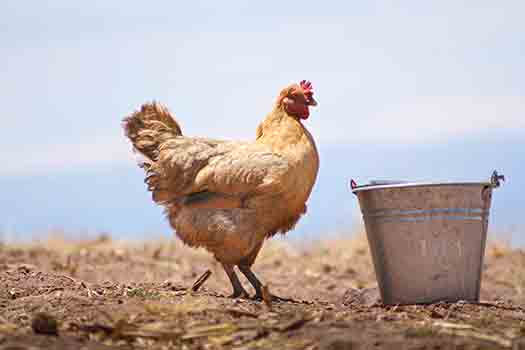
On the other hand, if you have enough faith in your construction abilities, building a coop is often a less expensive option than purchasing one from a store. In addition, it allows you to personalize your coop specifically for your backyard, rather than using the one-size-fits-all approach that most retailers take.
Pros:
1. Quality assurance
While this may seem like an odd pro, given that it was also listed under the pre-made discussion, a coop that you’ve built at home gives you quality assurance of a completely different kind. Specifically, a homemade coop gives you assurance in the quality of your own work.
With a coop that you’ve built from the ground up, you will know exactly all the strong and weak points of the structure. If you’ve followed your own design or blueprint, or even if you’ve got the plans from another source, so long as you know you’ve built it correctly, you will be able to rest secure knowing that the coop is completely solid and steady. Pre-made coops, on the other hand, rely on your trust in the manufacturer to guarantee that a coop is solid. If you’ve built your own coop, the only person whose word you have to take for the quality of the structure is your own.
2. It’s easier on the wallet
as mentioned above, there are affordable chicken coops available for purchase, but the price can increase quickly with quality. Some pre-made chicken coops can cost upwards of several thousand dollars, and any missing or damaged parts that have to be sent away to be replaced can drive the cost up even further.
By contrast, a coop that you build at home can be built using salvaged or recycled material. Plywood may not be as pretty as a store-made finished panel, but, when reinforced and insulated properly, it will usually be more than enough to keep your chickens feeling safe, warm, and happy.
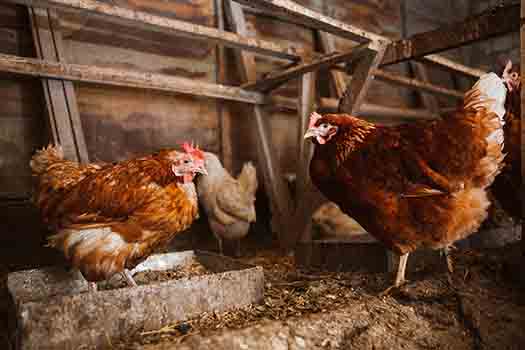
Oftentimes, the materials that you have around the house will put you well on your way to building your own coop, and the extra costs for the remaining materials can still be much lower than the cost of buying a pre-made coop from the store.
3. It’s personal
This last pro may seem a little less practical than the other factors on the list, but it’s not as cheesy as it sounds. Building a coop at home allows you to change the design based on the specific features of your yard or your flock that a pre-made coop cannot account for.
A coop that you build at home can be larger, with a more spacious run area, than the standard-issue coops you can buy at a store, or it can have a longer roof to shelter against the weather or deeper roots to stave off any potential predators.
Cons:
1. It takes time
This is probably the biggest factor to take into consideration when trying to choose between building and buying a coop. Especially if you have other animals or family members to take care of, setting aside time to build the coop can be difficult. While a pre-made coop may be cheaper, you have to take into account the time it will take you to build your own at home.
Regardless of your schedule, building a coop from scratch in your free time is an undertaking that’s going to carve out a large chunk of your leisure time. When you add in the time it will take to go shopping, to search for a blueprint, to source your materials, and to measure and prepare the site for your planned chicken coop, the minutes quickly add up.
2. It takes effort
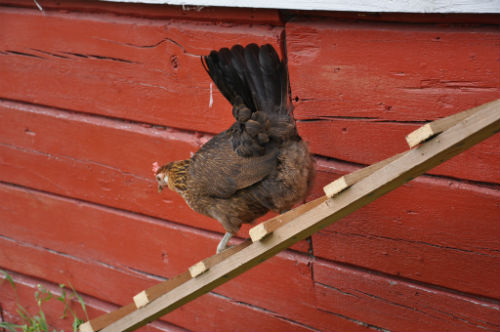
The biggest argument in favor of a pre-made coop is the ease of assembly, and the exact opposite is true when it comes to building your own coop. Building a coop at home takes a lot of hard work, and it can be exhausting to deal with after the demands of your daily routine.
In addition, the level of effort required to maintain a homemade coop is often greater than for a pre-made coop, as most store-bought coops are specifically designed to be easily cleaned or at least easily moved.
3. There’s no guarantee
Chicken coops purchased in a store or online are usually insured or guaranteed against some level of damage, and the easy replacement can be a quick way to get back on track after a heavy storm or dropped tree limb. Homemade coops, on the other hand, have no such guarantee, which can be daunting.
Whether you decide to buy or build, make sure you keep all the features listed earlier in this guide in mind. If you’re building your own, make sure you’ve planned out your project ahead of time and considered the particular needs of your flock before you start building. If you’re buying a coop, make sure you consider your options carefully before you make a choice, as a coop can be a big investment, and you want one that’s going to last you and your chickens for a long time.
Common Pitfalls of Chicken Coops
There are certain issues that crop up with any size flock. No matter if you’re about to start keeping chickens for the first time or if you’re a seasoned chicken farmer, there are common pitfalls that you should take care to avoid when choosing or building your coop.
These pitfalls all hinge mostly upon your chickens’ safety, but, as a rule, they can be boiled down to three separate areas of concern. First, before building or buying your coop, you need to plan ahead and take your flock’s size and needs into consideration.
Second, be sure to take weather into account when determining what coop is right for you. Finally, know your animals – be aware of what predators might be in the area, and factor that into your decision as you prepare to choose your coop.
Planning Ahead
This may seem like a no-brainer, but a lot of chicken farmers can be taken off guard by their flock’s needs. Planning your flock before you get your coop doesn’t mean that you should wait until you already have your chickens before you get your coop, but it can mean considering factors like:
Flock size
Size definitely does matter in this situation, and size, in this context, can refer to both the breed of your chickens and the size of your flock. As mentioned above, adequate room for your chickens is very important, so you will probably want to make sure you know about your chickens before you start looking for a coop.
Yard details
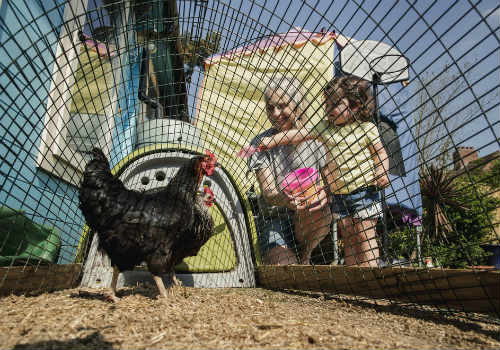
The size and makeup of your yard are important factors in your coop-related decision-making. If you know ahead of time that your yard only has room for a few chickens, try to steer clear of planning out a coop that takes up the entire space. If, on the other hand, your yard has plenty of room, a chicken coop that’s meant for tiny backyards will just make your chickens feel cramped and confined.
What type of yard you have will also make a big difference when it comes to choosing coops. If your yard is mostly gravel, concrete, or rock, you won’t have to worry about maintaining a lawn, but you will want to make sure that your coop is near enough some patch of dirt that your chickens can still forage and dust bathe without hurting themselves. A mobile or semi-mobile coop is a good solution to the “over-picking” problem, as it will allow you to move the coop to fresh pastures, so to speak, whenever the area around your chickens becomes too bare for their tastes or yours.
Personal preferences
This last category is far more subjective than the others, but most of the reviews on various coops seem to boil down to personal preference. In many cases, a buyer has purchased a coop from a retailer, only to be disappointed and frustrated when it doesn’t look the way they wanted it to.
If you’re purchasing a coop offline, be sure to read the reviews closely for any indication that the coop you’re buying may not look like what you’re imagining. Consider how you want your yard to look – or, if the aesthetic of your yard isn’t your main priority, keep in mind how your yard will be able to support the coop you’re looking at.
If you’re building your own coop, this isn’t as much of a concern, due to the many opportunities for personalization, but you should still make sure your coop will fit your yard and your own personal preferences before you begin to build.
Building materials can also be a matter of personal preference – so long as all the materials you consider will still adequately shelter and protect your chickens. Whether your decision be for environmental concerns or just preferences when it comes to what you’d like to clean, as long as your chickens are being cared for, you have the opportunity as the buyer or builder to choose which materials you prefer.
Finally, the type of coop you get should be based on your own personal preference. A mobile or semi-mobile coop will allow you to have more options when it comes to coop placement and sustainability, but a permanent coop will provide a sturdier base of operations for you and your chickens alike.
Take Weather Into Account
Weather, as discussed earlier, is a big factor in making your decision, and it can literally be a matter of life and death when it comes to keeping your chickens happy and healthy. As you’re getting ready to choose your chickens’ coop, keep in mind factors like:
Water
Chickens have multiple layers of feathers and thick, warm down, which can keep them warm in very cold temperatures, but there is a downside. If a chicken gets wet, it can be very difficult for the bird to get all of the moisture out of its feathers, and so the water is trapped right next to the skin. This can result in your chickens becoming very ill, or even dying.
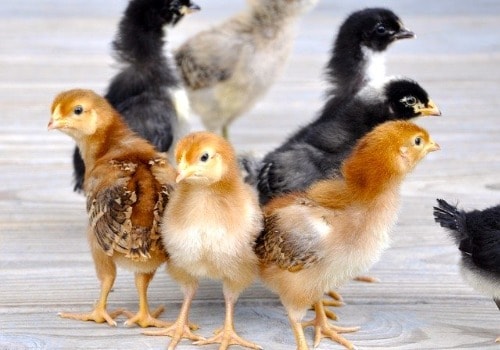
Obviously, keeping your chickens dry is an important part of keeping them healthy. When you’re deciding what kind of coop you want, consider how much water you regularly see around your home. If you live in an area that doesn’t get a lot of rain annually, you can look at more open-air coops that will allow for plenty of fresh air and sunshine for your chickens.
However, if you live in an area that gets a lot of rain, look for a coop that will protect your chickens from the water. Your coop should have a solid roof, a covered run, and walls that are built to keep out any drafty wind that may carry water vapor.
For areas that enjoy moderate amounts of rain throughout the year, you may want to look for a coop that offers the best of both worlds. A lot of coops have covered, or shaded areas, but are still built to withstand cold, damp winds without letting any water through to the chickens.
As a rule, the drier your chickens are, the happier they’ll be. If they are left too long in the cold and wet, they run a very high risk of becoming chilled. If this happens, they are far more likely to become sick, stop laying eggs, or worse, so a coop that keeps out moisture is the best coop, no matter what your climate is like.
Air
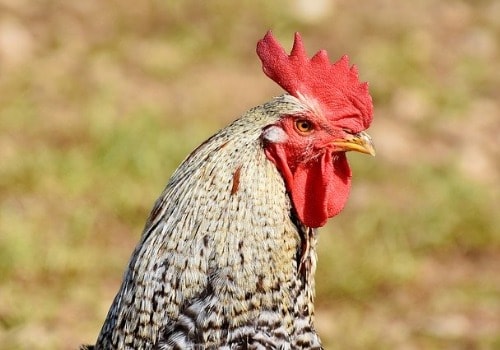
This is related to the previous entry, but the air temperature and quality of your area can be an important factor in deciding which coop you want. Having a steady flow of air into and out of the coop is a major contributor to your chickens’ health, and your coop should reflect that fact.
Generally, hot and dry areas will need to have a coop that allows for better circulation of air. If your chickens get overheated, they will suffer from various health effects, and the risk of dehydration or heatstroke will increase.
Look for coops that have open space beneath the coop – for example, coops that have the run beneath them. This will allow for a steady flow of air, and will also have a cooling effect on the coop itself, which your chickens will be sure to appreciate during hot summer days.
On the other hand, if you live in a cold, windy region, look for a coop that is fully insulated. The coop’s floor should be thicker, and usually made of wood or concrete, so that your chickens will be all safe and warm inside the coop, and fully protected from the cold, wet chill outside.
Heat
Hot or cold air brings us into the last topic to consider when choosing your coop: heat. Chickens have a naturally high body temperature, but that doesn’t mean that they’re immune to heatstroke. If chickens are overheated, they can easily become stressed, which opens them up to many different health risks.
Again, this is why planning before you start your flock is so important. If you live in an area that is prone to high temperatures and dry days, you can choose the coop that will best help your chickens stay happy and healthy.
For hotter regions, look for a coop that has a good flow of air, plenty of ventilation, and a shaded run. While your chickens may prefer to be outside during the day, this will allow them a place to relax if they grow overheated, and greatly reduces their risk of sunstroke or heat stroke.
If, on the other hand, you live in a cold area, try to avoid open runs, as they will pass more air underneath your chickens and leave them feeling chilled as the temperature drops. In both warm and cold areas, remember that metal is an excellent conductor of heat, and so a metal roof can either keep your coop cool during the winter or leave it scorching hot during the summer.
Know Your Animals
Finally, when it comes to keeping your chickens safe, being aware of exactly what kinds of predators they can expect to deal with can make all the difference. Every neighborhood is different, but dogs (and other members of the canine family) and raccoons are usually some of the biggest threats to your chickens’ safety, and should be dealt with accordingly.
Dogs
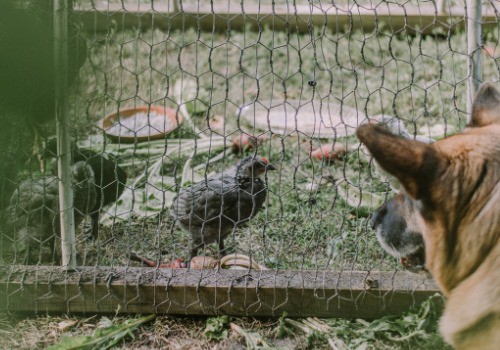
Dogs and other animals in the canine family, like coyotes, can open a lot of coops through sheer strength. If you have reason to suspect that your chickens are at risk of being preyed on by a dog, look for a coop that is sturdily built. Coops that are meant to stand up to dogs will have thicker walls and a deeper foundation.
Generally, most dog-proof coops are permanent coops, as the lightweight construction of a mobile or semi-mobile coop won’t provide a lot of protection against a persistent pooch. The foundation of a coop is important when dealing with dogs because most dogs love to dig.
If you’re building your coop, consider extending the walls – or even just sturdy wire mesh – a foot or so beneath the surface of the earth. This should deter any digging dogs from tunneling up into the coop and feasting on the eggs and chickens inside. If a determined dog is threatening your coop, you may also consider electrifying your coop, but only as an absolute last resort.
Raccoons

If dogs are all about brute strength, raccoons are the exact opposite. They may not be big enough to break into a coop through force, but they more than make up for their size with their cleverness and persistence.
If you live in an area that has a high raccoon population, look for a coop that can be latched or even locked shut. Raccoons have been known to undo latches in their quest for a meal, so make sure the latches on your coop are secure or tie them down with a length of twine. Like dogs, raccoons will often try to tunnel into your coop, but, unlike dogs, they are also able to reach through standard chicken wire or other wire fencing. To keep these pesky critters out, try extending a length of hardware cloth fencing beneath the foundation, with a link small enough that a raccoon can’t stick its paws through the gaps.
Like dogs, raccoons will often try to tunnel into your coop, but, unlike dogs, they are also able to reach through standard chicken wire or other wire fencing. To keep these pesky critters out, try extending a length of hardware cloth fencing beneath the foundation, with a link small enough that a raccoon can’t stick its paws through the gaps.
Conclusion
At the end of the day, you know better than anybody else what coop is going to be right for you and your birds. Whether you choose to build a coop yourself or take advantage of the many options available to purchase, the priority is making sure that your chickens are safe, happy, and healthy. Any coop that satisfies those conditions is the perfect coop for you and your flock, and your chickens are sure to love their new home!

